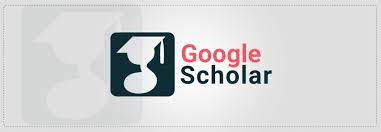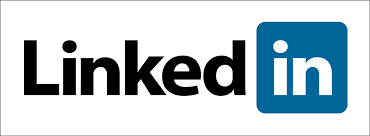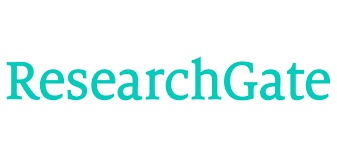ارایه مدل کیفی آسیبدیدگی برندهای رها شده بر اساس مطالعه آسیب به تصویر برند خودروهای لوکس وارداتی به ایران
کلمات کلیدی:
مدل کیفی, آسیبدیدگی برندهای رها شده, آسیب به تصویر برند, خودروهای لوکس وارداتی به ایرانچکیده
این مقاله مدل کیفی آسیب به برندهای رهاشده را بر اساس مطالعه آسیب به تصویر برند خودروهای لوکس وارداتی به ایران ارائه میدهد. پژوهش حاضر کیفی، کاربردی و بر مبنای نظریه دادهبنیاد است. از نظر هدف، پژوهشی کاربردی و از نظر روش تحلیل دادهها، توصیفی محسوب میشود. جامعه آماری شامل خبرگان صنعت خودرو و خبرگان بازاریابی، بهویژه واردکنندگان، مدیران عامل شرکتها و اعضای انجمن واردکنندگان خودرو است. دادهها از طریق مصاحبههای نیمهساختاریافته عمیق گردآوری شد. برای سنجش روایی پرسشها از روش روایی محتوایی و برای پایایی نتایج از روش کدگذاری مضاعف استفاده شد. تحلیل دادههای حاصل از ۱۰ مصاحبه با روش نظریه دادهبنیاد و رویکرد اشتراوس و کوربین در سه مرحله کدگذاری باز، محوری و انتخابی انجام شد و مدل پژوهش ارائه گردید. نتایج نشان داد که شرایط علی شامل عللی مرتبط با رهاشدگی مشتریان توسط شرکت مادر، ضعف عملکرد نمایندگان و ویژگیهای مشتریان خودروهای لوکس داخلی است. شرایط زمینهای شامل شرایط بینالمللی و کشور سازنده، عملکرد شرکت مادر و عملکرد نمایندگان است. شرایط مداخلهگر شامل ویژگیهای مشتریان خودروهای لوکس، تصویر و هویت برند، مداخلات مالی و اقتصادی، عملکرد نمایندگان و تعریف خودرو لوکس است. راهبردها شامل اقدامات مرتبط با عملکرد شرکت مادر، نمایندگان، بازیابی تصویر برند و استفاده از ویژگیهای مشتریان خودروهای لوکس برای تشویق به خرید مجدد است. در نهایت، پیامدها شامل پیامدهای مثبت در صورت اجرای راهبردها و پیامدهای منفی ناشی از رهاشدگی مشتریان و عدم اجرای راهبردها میشود.
دانلودها
مراجع
Abedini, B., & Haghighinasab, M. A. U. H. S. (2020). Explaining the relationship between perceived value of luxury car brands and their consumers' purchasing behavior in Tehran. Journal of Modern Marketing Research, 10(2SP - 43), 62. https://doi.org/10.22108/nmrj.2020.120942.1991
Agmeka, F., Wathoni, R. N., & Santoso, A. S. (2019). The Influence of Discount Framing towards Brand Reputation and Brand Image on Purchase Intention and Actual Behaviour in e-commerce. Procedia Computer Science, 161, 851-858. https://doi.org/10.1016/j.procs.2019.11.192
Aldhamiri, A., Carlson, J., Vilches-Montero, S., Rahman, S. M., & Gudergan, S. P. (2024). What drives higher active customer engagement in luxury brands' social media? Measurement and contingencies. Journal of Retailing and Consumer Services, 79, 103804. https://doi.org/10.1016/j.jretconser.2024.103804
Alinezhad, M., Salavati, S., & Nasimi, M. A. (2023a). Designing a model of luxury car consumers' attitudes based on a mixed approach. National Conference on New Challenges and Solutions in Management, Accounting and Insurance Industry, https://civilica.com/doc/1798240/
Alinezhad, M., Salavati, S., & Nasimi, M. A. (2023b). The indices affecting consumers' attitudes in the luxury car market by theme analysis method. Consumer Behavior Studies Journal, 10(2), 43-62. https://doi.org/10.34785/J018.2022.022ER -
Alinezhad, M., Salavati, S., & Nasimi, M. A. (2024). Influential indicators on the attitude of luxury car market consumers using thematic analysis. Consumer Behavior Studies, 10(1), 51-71. https://doi.org/10.34785/J018.2022.022
Andersen, P. H., Åberg, S., & Bujac, A. (2023). Corporate sustainable brand identity work and network embeddedness: Learnings from Better Place (2007-2013). Industrial Marketing Management, 115, 526-538. https://doi.org/10.1016/j.indmarman.2023.10.014
Barakati, P., Bertini, F., Corsi, E., Gabbrielli, M., & Montesi, D. (2024). Luxury Car Data Analysis: A Literature Review. Data., 9(48). https://doi.org/10.3390/data9040048
Chan, E. Y., & Palmeira, M. (2021). Political ideology moderates consumer response to brand crisis apologies for data breaches. Computers in human Behavior, 121, 106801. https://doi.org/10.1016/j.chb.2021.106801
Hashemi Salehi, S. M. (2021). Legal principles of franchise and trademark licensing agreements in the legal systems of Iran and Malaysia University of Zanjan, Faculty of Agriculture]. https://atu.ac.ir/fa/thesis/3246/
Jabeen, F., Kaur, P., Talwar, S., Malodia, S., & Dhir, A. (2022). I love you, but you let me down! How hate and retaliation damage customer-brand relationship. Technological Forecasting and Social Change, 174, 121183. https://doi.org/10.1016/j.techfore.2021.121183
Kumar, J. (2024). Psychological mechanisms behind access-based luxury brand consumption: Empirical investigation from the lens of new ownership paradigm. Journal of Business Research, 175, 114539. https://doi.org/10.1016/j.jbusres.2024.114539
Miles, S. J., & McCamey, R. (2018). The candidate experience: Is it damaging your employer brand? Business Horizons, 61(5), 755-764. https://doi.org/10.1016/j.bushor.2018.05.007
Mohaghegh, N., Amooamoo, M., & Hashemi Salehi, S. (2021). Investigating and identifying the sales drivers of Iran Khodro luxury products (Tara product) in emerging markets with a competitive advantage strategy to influence the determinants of customer loyalty and customer relationships in social media Legal principles of franchise and trademark license contracts in the legal system of Iran and Malaysia. Journal of Management Sciences Research, 3(9), 137-153. https://civilica.com/doc/1500938/
Nunes, L. (2024). Impact of Brand Image on Consumer Buying Behavior towards Luxury Automobile Segment. International Research Journal on Advanced Engineering and Management, 02, 237-247. https://doi.org/10.47392/IRJAEM.2024.0037
Pedrosa, G., Nobre, H., & Sousa, A. (2024). Consumers' attitudes on downscale extensions of a luxury automotive brand. Euromed Journal of Business. https://doi.org/10.1108/EMJB-04-2023-0127
Quamina, L. T., & Singh, J. (2023). Negative spill over effects in brand alliance crises. Public Relations Review, 49(5), 102394. https://doi.org/10.1016/j.pubrev.2023.102394
Sameeni, M. S., Qadeer, F., Ahmad, W., & Filieri, R. (2024). An empirical examination of brand hate influence on negative consumer behaviors through NeWOM intensity. Does consumer personality matter? Journal of Business Research, 173, 114469. https://doi.org/10.1016/j.jbusres.2023.114469
Shankar, A., Kumar, A., Behl, A., Pereira, V., & Budhwar, P. (2024). You or an imposter? How to protect brand identity in a business-to-business context? Industrial Marketing Management, 116, 93-105. https://doi.org/10.1016/j.indmarman.2023.12.001
Wang, F., Wang, Y., Han, Y., & Cho, J. H. (2024). Optimizing brand loyalty through user-centric product package design: A study of user experience in dairy industry. Heliyon, 10(3), e25484. https://doi.org/10.1016/j.heliyon.2024.e25484
Wongsunopparat, S., & Tapanya, N. (2023). Factors influencing Consumer's Driving Behavior of Most Preferred Luxury Car Brand in Bangkok Thailand. Journal of Asian Development, 8(2), 20-39. https://doi.org/10.52941/jad.v8i2.38
Zou, P., & Li, G. (2016). How emerging market investors' value competitors' customer equity: Brand crisis spillover in China. Journal of Business Research, 69(9), 3765-3771. https://doi.org/10.1016/j.jbusres.2015.12.068
دانلود
چاپ شده
ارسال
بازنگری
پذیرش
شماره
نوع مقاله
مجوز
حق نشر 2025 احمد محمد علی خاکی , امیر محمد زاده, مهدی زکی پور (نویسنده)

این پروژه تحت مجوز بین المللی Creative Commons Attribution-NonCommercial 4.0 می باشد.









